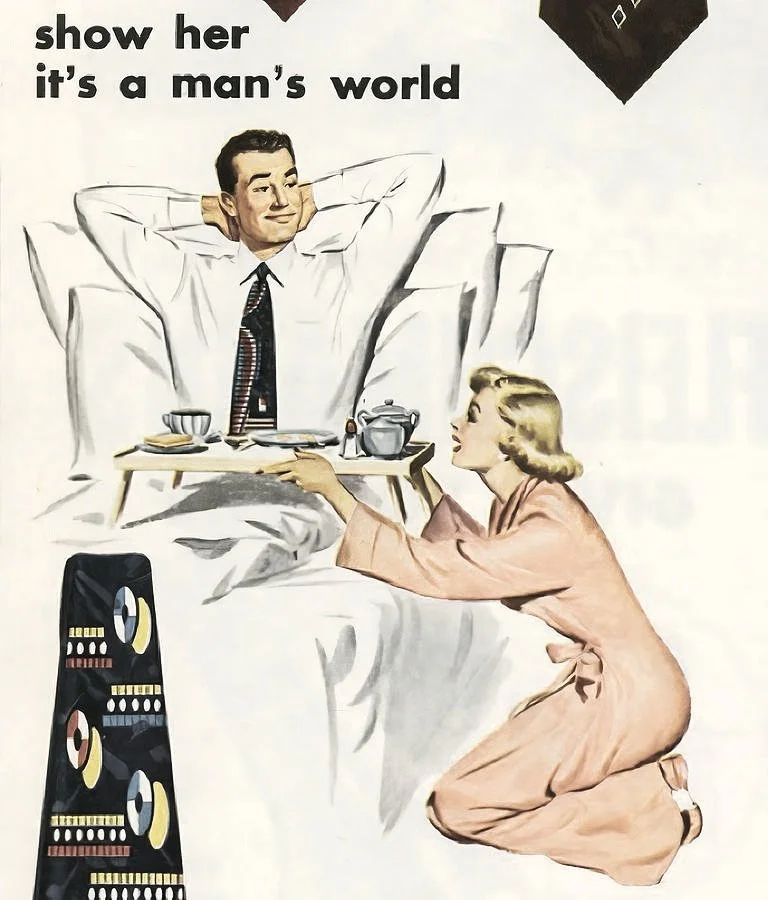Is the “Tradwife” trend a lifestyle choice or just another way to oppress women.
The term “Tradwife” (referring to the neologism for Traditional Wife) has dominated social media in the last year, with hundreds of women flocking to show off their #Tradwife lifestyles.
There is no mistaking a tradwife influencer. On camera, she cooks for her husband, packs lunches for her five children after baking an apple pie, and does it all in a perfectly white suburban kitchen. She is portrayed to her audiences as the personification of the "female dream", to lounge around all day in a dress and do housework. This is precisely what they are selling us: a woman's dream and ultimate place is in the kitchen. Yes, it sounds harsh and no I do not mean literally "existing only inside of a kitchen". This being said, if you disregard the surface-level intention behind a “Tradwife” video, this is the widespread impression this content leaves on young women. Whether a creator is showing how fulfilling they find staying home to raise children, or videoing themselves spending hours cooking lunch from scratch, the core values of the “Tradwife” ideology remain the same.
The origins of the term Tradwife are unclear with some pages claiming it originated from an anti-feminist Reddit page called “Red Pill Women”. Although we don't know precisely where it comes from, the connotation has been consistent since the term's original rise to popularity in the early 2010s. “Tradwife” refers to a married woman who Mirrors orthodox gender roles, expressly those of the 1950s. These roles are concentrated on, cleaning, cooking, raising children, and other domestic skills while maintaining the appearance of contemporary feminism. The most controversial part of the “Tradwife” lifestyle is centered around the ideology that it is a man's job to financially support his family and a woman's job to serve her husband so that he can achieve this goal.
With the world's current state of economic and political turbulence, it is clear why a more traditional lifestyle could be attractive to young women. A life of leisure and comfort inside the home is romanticized, with "red pill" women using the outdated idea that this is a woman's biological role. Thus it is marketed as the only way to have a happy and successful family. The Tradwife trend fails to educate on the history of traditional gender role ideology or the reality of the lifestyle behind the bounds of the white, upper-middle-class, nuclear family (a 20th-century term referring to a mother, father, and children living in a shared space).
What a Housewife Must Know (1934). An excerpt from the McCall's Magazine film Living Pages.
“Television shows of this era presented average Americans with the perfect family, highly dependent on the perfect housewife…” “...1950s television was largely sterile in its excitement or dangerousness. The virtue of 50s television housewives is similar to that of Disney princesses; all of the positive representations of women in the 1950s were ones where the female is effortlessly beautiful, kind, innocent, and a protector of the family. ”
Media shapes our culture and has done so primarily through products, television, and more recently social media. It is the primary way to affect and influence other people, by producing content that is aligned, sometimes indirectly with your primary political beliefs. Historically, media, specifically television and ads have been used to combat social movements. During the 1950s after the end of the Second World War, there was a rise in interest from the western female population to work outside of the home. This was primarily due to traditionally male jobs being reassigned to women, while workers went overseas to fight. Unsurprisingly the men who returned to work wanted a wife to take her place again in the role that was viewed as her job. This countermovement to the “working wife,” urged women to prioritize domestic jobs as it was viewed as essential to rebuilding after the war.
Any diversion from this ideology was seen as a direct attack on the ideal life the average American man hoped to live. Subsequently limiting the ability for change to happen in the lives of these women, and continuing the systematic discrimination against women in the workforce. It was ultimately a tradition of keeping women in subservient positions.
Tradwife lifestyle fails to account for the systematic discrimination and abuse that women faced in the household. The idea of a tradwife is essentially conformity bound in a glorified misunderstanding of tradition. When we continue to consume media that preaches this ideology it leads to a culture shift and limits our ability to progress, just like it did in the 1950s. It leads to expectations not only in ourselves and our potential partners that this is what a woman is supposed to do, teaching new generations of men and women that it is a woman's job to be submissive and limit her dreams to her household.
“If there’s anyone to worry about watching and absorbing tradwife content to the letter, I suspect that it’s these men. There are too many stories about fathers and husbands who abuse the power they have over their families and too many stories about the wives and children who flee their coercive control.”
The Women who are pushing for the return of the Tradwife, are ignorant to the fact that their position in society was a result of decades of fighting to be treated equally under the law. Overlooking the years of systematic and cultural shifts that allowed women to be treated with the respect they deserve as independent individuals. What these “tradfluencers” fail to recognize is their choice in the direction of their own lives. Being a tradwife today is to make an independent choice, the right to choose is the key element of feminism and to undermine that is to disregard a century of social and political changes made possible by generations of women.
